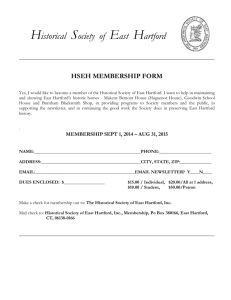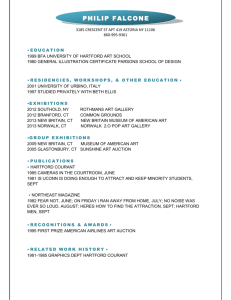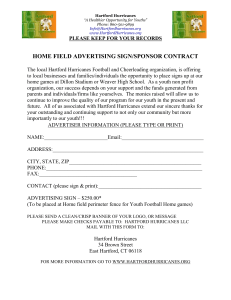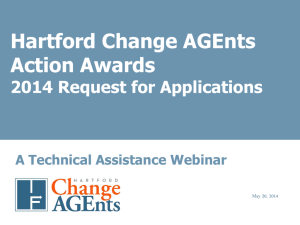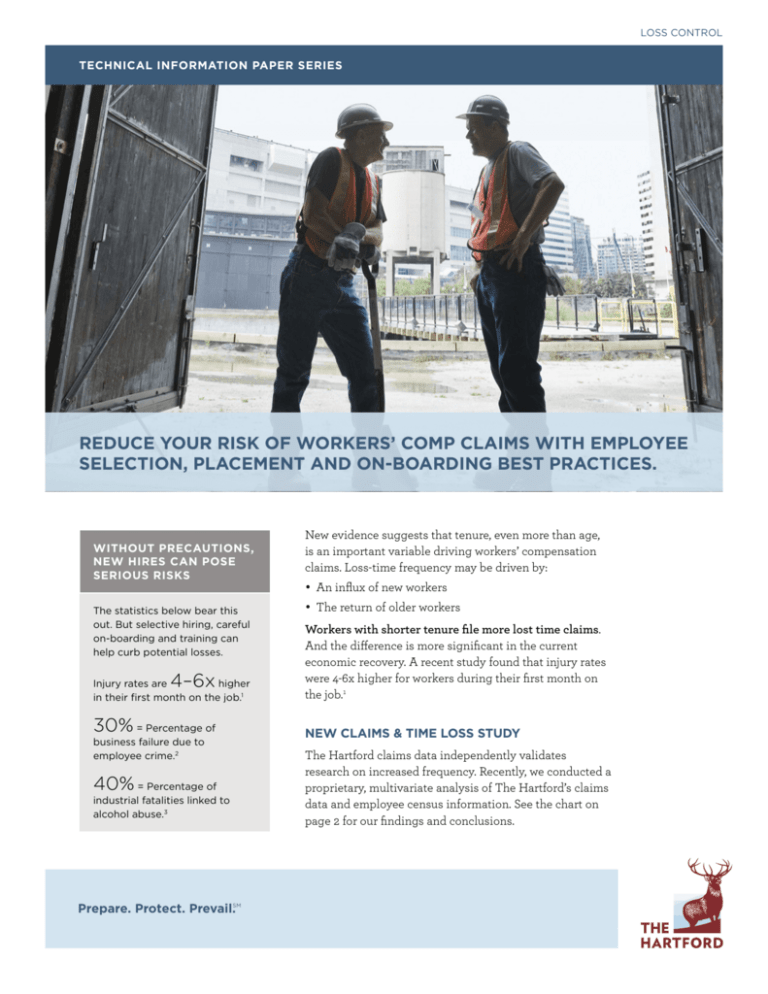
LOSS CONTROL
Technical Information Paper Series
REDUCE YOUR RISK OF WORKERS’ COMP CLAIMS WITH EMPLOYEE
SELECTION, PLACEMENT AND ON-BOARDING BEST PRACTICES.
WITHOUT PRECAUTIONS,
NEW HIRES CAN POSE
SERIOUS RISKS
The statistics below bear this
out. But selective hiring, careful
on-boarding and training can
help curb potential losses.
4–6x
Injury rates are
higher
in their first month on the job.1
30%
= Percentage of
business failure due to
employee crime.2
40% = Percentage of
industrial fatalities linked to
alcohol abuse.3
Prepare. Protect. Prevail.SM
New evidence suggests that tenure, even more than age,
is an important variable driving workers’ compensation
claims. Loss-time frequency may be driven by:
• An influx of new workers
• The return of older workers
Workers with shorter tenure file more lost time claims.
And the difference is more significant in the current
economic recovery. A recent study found that injury rates
were 4-6x higher for workers during their first month on
the job.1
NEW CLAIMS & TIME LOSS STUDY
The Hartford claims data independently validates
research on increased frequency. Recently, we conducted a
proprietary, multivariate analysis of The Hartford’s claims
data and employee census information. See the chart on
page 2 for our findings and conclusions.
new hire on-boarding
CLAIMS & TIME LOSS STUDY FINDINGS
What was the study based on?
Where’s the greatest risk?
• The Hartford’s claims data and employee census information
• Tenure of less than one year was the
single most significant predictor
• Industries with a greater probability of injury, such as construction
and manufacturing
What were the predictors for claims and loss?
• Tenure
• Age
• Salary
• Inexperienced workers have 2-4x the loss
cost relativity
• Workers with tenure of less than a year
have a much higher claims frequency –
regardless of age
• Workers tenured for 2+ years have
relatively low claims frequency and
loss costs
When is the risk MOST likely?
• Severity is higher in older workers,
regardless of experience
• The first year presents the highest risk
• The first month is twice as risky as subsequent months
HELP REDUCE POTENTIAL FOR FUTURE LOSSES BY
CAREFULLY CONTROLLING THE HIRING PROCESS4
With effective candidate selection, hiring and training, you can
help offset the impact of inexperience.
Putting these new-hire controls into practice can help.
Pre-Employment Controls
P
ost-Employment Controls
• Background checks (criminal,
motor vehicle registration,
financial)
• Physician (medical)
assessment
• Verification of employment,
education, licensing,
credentials (See sidebar)
• Physical exam
• Random drug testing
• Drug testing
• Behavioral assessments
(culture fit, risk potential,
job skills, cognitive abilities,
critical thinking, abstract
reasoning)
WHO ARE YOU
HIRING, REALLY?
Recent studies reveal that applicants aren’t
always who they purport to be. What
looks good on paper may, in fact, be false
information. Statistics like the ones below
underscore the importance of verifying
records and credentials before you hire.5
53%
of all job applications
contain inaccurate
information
46%
of employment, education,
or reference checks
revealed discrepancies6
74%
of all drug users are
employed3
14.1%
of construction workers
used drugs in the last
30 days7
30%
of the adult U.S. population
has a criminal record8
• Drug testing
2
new hire on-boarding
HELP LIMIT RISKS MOST LIKELY TO IMPACT NEW HIRES AND SHORT-TENURED EMPLOYEES
Every employer has a legal obligation under the Occupational Safety and Health Act of 1970 to provide and
maintain a safe and healthful workplace for employees. A comprehensive safety and health program will address
exposure associated with new hires and all employees.
We recommend the following best practices checklist to help control risks:
PROGRAM
CHECKLIST
Safety and Health
Program
❏❏Review your plan
❏❏Make revisions to assure it applies to all employees
❏❏Make sure all supervisors and managers are actively engaged in safety
❏❏Notify new employees of your commitment to safety
Safety and Health
Training
❏❏Emphasize safety and health with all new hires and temporary employees, including
them in all programs
❏❏Provide hands-on safety training specific to each job
❏❏Involve supervisors and managers in safety training of new hires, plus follow-up
and enforcement
❏❏Observe operations and provide feedback
❏❏Provide training in alternate languages as necessary
❏❏Encourage questions from employees
Loss Control
Make sure new hires participate in these programs, and educate them on how they
apply to their jobs as well as your entire operation.
Ergonomics
❏❏Provide work stations, equipment and tools appropriate for the job
❏❏Educate workers on use of work stations and equipment
Functional job
analysis
❏❏Be proactive about providing functional job descriptions that clearly identify essential
Machine guarding
❏❏Make sure all equipment is properly guarded
❏❏Make sure new hires know how to use the equipment and guards
Driver safety
❏❏Obtain periodic motor vehicle registration information on all employees with
and non-essential job functions as well as physical and other requirements
❏❏Analyze jobs to clearly identify all of the above
driving responsibilities
❏❏Inspect vehicles to assure they’re in good operating condition
❏❏To boost driver safety, consider:
»» Implementing The Hartford’s 3-D Driver Training course
»» Participating in The Hartford’s Driver Improvement Fleet Conferences
Return-to-work
(RTW)
❏❏Develop an RTW program that includes:
»» Functional job descriptions
»» Employee and medical provider communication
»» Transitional duty opportunities
»» Assure that new hires are aware of your RTW program(s) and expectations
Designated safety
equipment for new
hires
❏❏Provide hard hats, eye protection, safety vests of a different color and name badges
Buddy/mentor
program
❏❏Team up new employees with a “safe” person to consult with questions or concerns
to help your employees identify and support new hires during orientation
3
new hire on-boarding
PERSISTENT RISK MANAGEMENT CAN
HELP CURB WORK-RELATED INJURIES
By understanding the link between workers’
compensation claims and employee selection,
placement and safety on-boarding, you’ll be in
better position to:
• Help reduce frequency and severity
of claims
• Retain the more highly skilled, experienced,
and productive workers
Remember that risk management for
work-related injuries doesn’t end at hire. A
persistent effort works best. While special
attention and safety training should be
provided to newly hired workers, the benefits
can extend to all employees and company
operations in general.
FOR MORE RESOURCES, VISIT US OR CALL.
We’re here to help you prevail at thehartford.com/losscontrol.
Or contact your local Hartford agent or Loss Control consultant today.
Breslin FC, Smith P. Trial by fire: a multivariate
examination of the relation between job tenure and work
injuries. Occup Environ Med. 2006; 13:27–32.
1
Kuratko, Donald F.; Hornsby, Jeffrey S.; Naffziger, Douglas
W.; Hodgetts, Richard M. Crime and Small Business: An
Exploratory Study of Cost and Prevention Issues in U.S.
Firms. Journal of Small Business Management, July 2000;
Vol. 38, No. 3.
2
3
www.ndwa.org/aboutus.php
4
mployers’ hiring practices are regulated by state and
E
federal law, including but not limited to, the regulations of
the ADAAA and EEOC. Employers should always consult
with legal counsel before establishing any practice that
involves hiring.
5
Sources: CareerBuilder.com Survey (2008); Gurtin vs.
Nurse Connection, et. al. (2002); Human Resources
Management (2008); Recruiting Times, Society of Human
Resources Management (2003); Two Wrongs May Mean
No Rights, by Barbara Kat Repa, Nolo.com, (2001); U.S.
Department of Labor, Wall Street Journal (2003); U.S.
Department of Justice
6
www.statisticbrain.com/resume-falsification-statistics
7
www.samhsa.gov/data/occupation.htm
U.S. Department of Justice Office of The Attorney
General: The Attorney General’s Report on Criminal
History Background Checks; June 2006.
8
The Hartford® is The Hartford Financial Services Group, Inc.
and its subsidiaries, including issuing companies, Hartford
Fire Insurance Company, Hartford Life Insurance Company
and Hartford Life and Accident Insurance Company. Its
headquarters is in Hartford, CT.
Please be advised that employers’ hiring practices are
regulated by state and federal law, including but not
limited to, the regulations of the ADAAA and EEOC.
Employers should always consult with legal counsel before
establishing any practice that involves hiring.
The information provided in these materials is intended
to be general and advisory in nature. It shall not be
considered legal advice. The Hartford does not warrant
that the implementation of any view or recommendation
contained herein will: (i) result in the elimination of any
unsafe conditions at your business locations or with
respect to your business operations; or (ii) will be an
appropriate legal or business practice. The Hartford
assumes no responsibility for the control or correction of
hazards or legal compliance with respect to your business
practices, and the views and recommendations contained
herein shall not constitute our undertaking, on your behalf
or for the benefit of others, to determine or warrant that
your business premises, locations or operations are safe
or healthful, or are in compliance with any law, rule or
regulation. Readers seeking to resolve specific safety, legal
or business issues or concerns related to the information
provided in these materials should consult their safety
consultant, attorney or business advisors.
14-0718 © September 2014 The Hartford Financial Services Group, Inc. All rights reserved.
Business Insurance
Employee Benefits
Auto
Home

